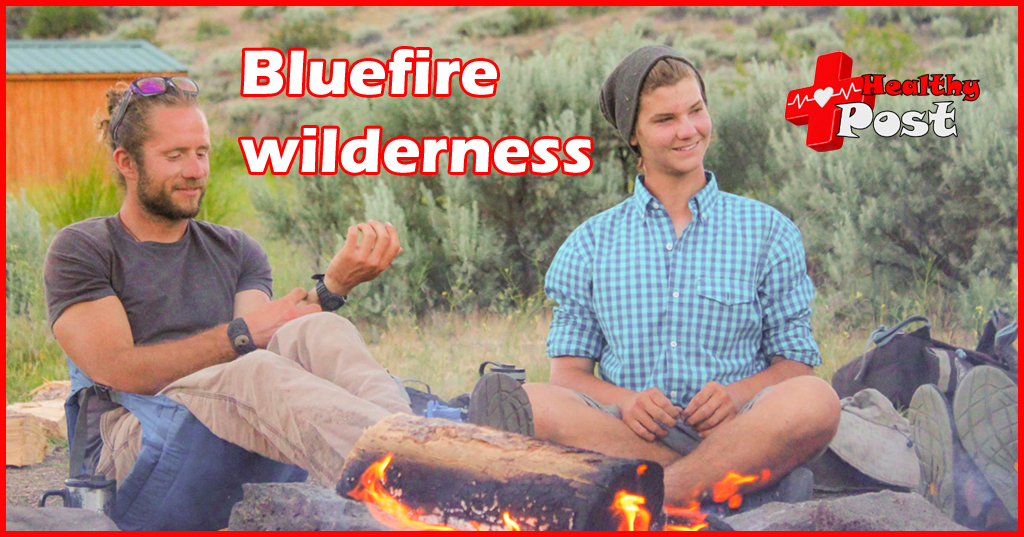
What is bluefire wilderness and its benefitd
BlueFire Wilderness is a leading wilderness therapy program for struggling teens. It helps young people overcome emotional, behavioral, and mental health challenges. Located in Idaho, it combines outdoor adventure with clinical therapy.
This article explains what BlueFire Wilderness is and how it benefits teens. Many families seek effective programs to help their children grow emotionally and mentally. BlueFire Wilderness offers a structured, therapeutic environment that promotes self-discovery and healing.
Wilderness therapy provides a unique approach to treatment. Unlike traditional therapy, it removes distractions and immerses teens in nature. This helps them build resilience, confidence, and problem-solving skills. At BlueFire Wilderness, teens participate in outdoor activities such as hiking, camping, and teamwork exercises. These activities promote physical health and emotional well-being.
One of the key benefits of BlueFire Wilderness is its personalized treatment plans. Every teen receives therapy tailored to their needs. Licensed therapists work closely with participants to address issues such as anxiety, depression, trauma, and defiance. The program also focuses on developing essential life skills. Teens learn responsibility, communication, and self-reliance.
Another advantage is the supportive environment. The program fosters trust and personal growth. Teens receive guidance from experienced mentors and therapists. This support system helps them develop healthier relationships with family and peers.
BlueFire Wilderness also involves families in the healing process. Parents receive updates and guidance to support their child’s progress. Family therapy sessions help rebuild trust and communication.
In the following sections, we will explore BlueFire Wilderness in detail. We will discuss its core principles, therapeutic approach, and success stories. If you are considering wilderness therapy for your teen, this article will help you understand how BlueFire Wilderness can make a difference.
What is BlueFire Wilderness?
BlueFire Wilderness is a specialized therapy program that helps struggling teens. It combines outdoor adventure with clinical treatment. The program is designed for adolescents facing emotional, behavioral, and mental health challenges. Located in the scenic wilderness of Idaho, it provides a safe and structured environment for personal growth and healing.

Unique Features of BlueFire Wilderness
1. Adventure-Based Therapy
BlueFire Wilderness uses outdoor activities to promote emotional and psychological healing. Teens participate in hiking, camping, rock climbing, and team challenges. These activities help them build confidence, resilience, and problem-solving skills.
2. Personalized Treatment Plans
Every teen in the program receives a customized treatment plan. Licensed therapists assess their needs and create strategies for emotional and behavioral growth. Therapy sessions include individual, group, and family counseling.
3. Safe and Supportive Environment
The program provides a structured and nurturing environment. Experienced mentors and therapists guide teens through their challenges. This support system helps them feel secure while they work on personal development.
4. Skill Development
BlueFire Wilderness focuses on teaching essential life skills. Teens learn responsibility, communication, teamwork, and self-reliance. These skills help them build healthier relationships and prepare for the future.
5. Family Involvement
A key feature of BlueFire Wilderness is family participation. Parents receive regular updates and guidance on how to support their child’s progress. Family therapy sessions help rebuild trust and improve communication.
History of BlueFire Wilderness
BlueFire Wilderness was founded to help struggling teens through outdoor therapy. It was established by a team of experienced mental health professionals who saw the benefits of combining nature with clinical treatment. Their goal was to create a program that fosters personal growth, emotional healing, and life skills development.
Key Milestones in BlueFire Wilderness Development
1. Establishment and Early Years
BlueFire Wilderness was launched in Idaho, a state known for its vast and beautiful landscapes. The founders chose this location because nature plays a crucial role in wilderness therapy. The program started with a small group of therapists, mentors, and adventure guides dedicated to helping teens overcome emotional and behavioral challenges.
2. Expansion of Therapeutic Programs
As the program grew, BlueFire Wilderness expanded its therapeutic services. It introduced personalized treatment plans, combining adventure therapy with individual and group counseling. Licensed therapists developed structured programs for issues like anxiety, depression, trauma, and defiance.
3. Family Involvement and Support
A major milestone was integrating family therapy into the program. BlueFire Wilderness recognized that long-term success depends on family relationships. The program introduced regular parent updates, family counseling sessions, and workshops to rebuild trust and communication between teens and their families.
4. Recognition and Success Stories
Over the years, BlueFire Wilderness gained national recognition as an effective therapeutic program. It received positive feedback from families and mental health experts. Many participants shared success stories, highlighting how the program changed their lives.
Geographic Location and Accessibility
Location of BlueFire Wilderness
BlueFire Wilderness is located in the scenic landscapes of southern Idaho. The program operates in a remote yet accessible area, surrounded by mountains, forests, and open land. This natural environment provides the perfect setting for wilderness therapy. The peaceful surroundings help teens disconnect from distractions and focus on personal growth.
The region experiences all four seasons, offering a variety of outdoor experiences throughout the year. Summer provides warm, sunny days for hiking and camping, while winter brings snow, allowing for unique survival and teamwork challenges. The changing environment helps participants develop adaptability and resilience.
How to Access BlueFire Wilderness
Despite its remote location, BlueFire Wilderness is easily accessible for families traveling from different parts of the country. The program is based near Boise, Idaho, which serves as the main transportation hub.
- By Air:
- The nearest major airport is Boise Airport (BOI).
- Families can fly into Boise from most major cities in the U.S.
- Upon arrival, transportation arrangements can be made to reach the wilderness site.
- By Road:
- BlueFire Wilderness is accessible by car from Boise via well-maintained highways.
- The drive takes approximately 2 to 3 hours, depending on weather conditions.
- Families visiting for intake or therapy sessions can follow detailed driving directions provided by the program.
- Transport Assistance:
- BlueFire Wilderness helps families coordinate safe transportation for teens.
- Professional transport services are available for students who need assistance reaching the program.
Flora and Fauna of BlueFire Wilderness
BlueFire Wilderness is located in the diverse landscapes of southern Idaho. The region is home to a rich variety of plant and animal species. This biodiversity plays a crucial role in wilderness therapy, creating a calming and immersive natural environment for participants.
Notable Plant Species
The area surrounding BlueFire Wilderness features a mix of forests, grasslands, and shrublands. Some key plant species include:
- Ponderosa Pine (Pinus ponderosa) – A tall, resilient tree that provides shade and shelter.
- Sagebrush (Artemisia tridentata) – A hardy shrub known for its strong aroma, commonly found in dry areas.
- Quaking Aspen (Populus tremuloides) – Recognized by its white bark and fluttering leaves, adding beauty to the landscape.
- Bitterroot (Lewisia rediviva) – A small flowering plant with pink blossoms, often found in rocky areas.
- Wildflowers – Various seasonal wildflowers bloom, including lupines, Indian paintbrush, and balsamroot.
Key Animal Species
The wilderness supports a variety of wildlife, including mammals, birds, and reptiles. Some notable species include:
- Mule Deer – Commonly seen grazing in open areas.
- Elk – Large and majestic, often found in forested regions.
- Red Fox – A small predator known for its intelligence and adaptability.
- Golden Eagle – A powerful bird of prey, soaring high above the landscape.
- Western Rattlesnake – A native reptile that plays an important role in the ecosystem.
Significance of Biodiversity
Biodiversity enhances the therapeutic experience at BlueFire Wilderness. The presence of diverse plants and animals creates a peaceful and engaging environment. Exposure to nature helps reduce stress, improve mental clarity, and foster a deeper connection with the natural world. This setting supports emotional healing and personal growth, making wilderness therapy more effective.
Outdoor Activities in BlueFire Wilderness
BlueFire Wilderness offers a variety of outdoor activities that promote personal growth and healing. These activities help participants develop confidence, teamwork, and problem-solving skills. The natural surroundings provide the perfect setting for adventure and self-discovery.
Hiking Trails

The program includes guided hikes through scenic trails in the Idaho wilderness. Some trails are easy and suitable for beginners, while others challenge participants with steep climbs and rugged terrain. Hiking helps teens build physical endurance and mental resilience. Along the way, they learn navigation skills, teamwork, and self-reliance.
Camping Spots
BlueFire Wilderness offers several safe and secluded camping spots. These locations provide a true wilderness experience, allowing teens to disconnect from distractions. Participants set up tents, build campfires, and learn essential survival skills. Camping teaches responsibility, patience, and problem-solving while fostering a deeper connection with nature.
Water Activities
Although the program is based in a dry region, there are opportunities for water-related activities. Nearby rivers and lakes offer chances to learn essential survival techniques. In warmer months, participants may engage in activities such as:
- Stream Crossings – Learning how to safely navigate shallow waters.
- Basic Water Purification – Understanding how to filter and purify drinking water in the wilderness.
- Fishing – Learning patience and self-sufficiency by catching fish in permitted areas.
Birdwatching Opportunities
The Idaho wilderness is home to a variety of bird species. Participants can spot majestic birds such as:
- Golden Eagles – Large birds of prey soaring above the mountains.
- Red-Tailed Hawks – Often seen gliding over open fields.
- Western Bluebirds – Brightly colored songbirds that add beauty to the landscape.
Observing wildlife helps teens practice mindfulness and appreciation for nature. These outdoor activities create a transformative experience that enhances emotional well-being and personal growth.
Benefits of Visiting Bluefire Wilderness
Physical Health Benefits
One of the primary advantages of visiting Bluefire Wilderness is the boost to physical health. Engaging in outdoor activities such as hiking, walking, or cycling helps improve cardiovascular health, build muscle strength, and enhance overall fitness levels. The diverse trails and varying terrains present in Bluefire Wilderness provide excellent opportunities for moderate to intense workouts. The physical exercise involved in exploring the wilderness can also aid in weight management and improve joint flexibility.
Spending time outdoors allows visitors to breathe in fresh air, which is vital for lung health. The clean, unpolluted air in Bluefire Wilderness is a welcome break from the often polluted urban environments. Moreover, exposure to natural sunlight enables the body to produce vitamin D. This essential nutrient supports bone health, boosts the immune system, and plays a role in mood regulation. Regular exposure to nature and sunlight can help maintain optimal health and prevent diseases associated with vitamin D deficiency.
Mental Health Benefits
Visiting Bluefire Wilderness has significant benefits for mental health. The serene and tranquil environment of the wilderness provides an escape from the stress and hustle of daily life. Being immersed in nature can lower cortisol levels, a hormone associated with stress, and help relax the mind. The calming effect of nature reduces anxiety and promotes a sense of peace and well-being.
Practicing mindfulness in such a setting enhances relaxation and mental clarity. Mindfulness activities, such as meditation or mindful walking, can be more effective when done in natural surroundings. The sensory experiences—sight, sound, and smell—of the wilderness help ground individuals in the present moment, fostering a deeper connection with nature.
Additionally, the wilderness encourages relaxation by reducing the distractions and demands of everyday life. Spending time in Bluefire Wilderness allows individuals to disconnect from technology and reconnect with themselves and the natural world, leading to a more balanced and harmonious mental state.
Conservation Efforts in Bluefire Wilderness
- Describe ongoing conservation projects.
- Explain the importance of conservation.
How to Plan a Visit to Bluefire Wilderness
Planning a visit to Bluefire Wilderness can be a rewarding experience if done correctly. Here are some tips to ensure a smooth and enjoyable trip:
Tips for Planning
- Research the Area: Start by researching the various trails, campsites, and activities available in Bluefire Wilderness. Knowing what to expect will help you make the most of your visit.
- Pack Essentials: Ensure you pack necessary items such as proper footwear, weather-appropriate clothing, a first-aid kit, food, water, and navigation tools like maps or GPS.
- Check Weather Conditions: Always check the weather forecast before your trip. It will help you prepare and avoid any unpleasant surprises.
- Plan Your Route: Determine your starting point, destination, and any points of interest along the way. This will help you stay on track and make the most of your time.
- Inform Someone: Always inform a friend or family member about your plans, including your expected return time. This is crucial for safety reasons.
- Stay Hydrated: Carry enough water to stay hydrated, especially if you’re engaging in strenuous activities.
Necessary Permits and Regulations
- Obtain Permits: Check if you need any permits for activities like camping, fishing, or hiking. Obtain these permits in advance to avoid any last-minute hassles.
- Follow Regulations: Familiarize yourself with the rules and regulations of Bluefire Wilderness. This includes respecting wildlife, staying on designated trails, and adhering to campfire regulations.
- Leave No Trace: Practice the “Leave No Trace” principles. Pack out all trash, avoid disturbing wildlife, and leave the environment as you found it.
By following these tips and regulations, you can ensure a safe and memorable visit to Bluefire Wilderness. Happy exploring!
Safety Tips for Visitors
Safety Precautions
- Stay on Marked Trails: Always follow designated paths to avoid getting lost.
- Carry a First-Aid Kit: Have basic medical supplies for minor injuries.
- Stay Hydrated: Drink plenty of water, especially during strenuous activities.
- Wear Appropriate Clothing: Dress in layers and wear sturdy footwear.
- Check Weather Forecasts: Be aware of weather conditions and plan accordingly.
- Inform Others of Your Plans: Let someone know your itinerary and expected return time.
- Carry a Map and Compass: Don’t rely solely on electronic devices for navigation.
- Be Aware of Wildlife: Maintain a safe distance from animals and store food securely.
- Pack Sufficient Supplies: Bring enough food, water, and equipment for your trip.
- Know Your Limits: Avoid pushing yourself beyond your physical capabilities.
What to Do in Case of Emergencies
- Stay Calm: Keeping a clear head is crucial during emergencies.
- Assess the Situation: Evaluate the severity of the situation and identify immediate threats.
- Call for Help: Use a mobile phone or a whistle to signal for assistance. If possible, contact emergency services.
- Administer First Aid: Provide basic first aid to anyone injured. Use the first-aid kit for treating minor injuries.
- Stay Put if Lost: If you are lost, it’s often best to stay in one place to make it easier for rescuers to find you.
- Signal for Help: Use signals such as a whistle, mirror, or flashlight to attract attention.
- Create Shelter if Necessary: Protect yourself from the elements by creating a makeshift shelter.
- Conserve Resources: Ration food and water if you expect a delay in rescue.
- Keep Warm: Use available materials to stay warm and dry.
- Reassure Others: If you are with a group, keep everyone calm and work together to stay safe.
By following these safety precautions and knowing what to do in case of emergencies, you can ensure a safer and more enjoyable visit to Bluefire Wilderness.

